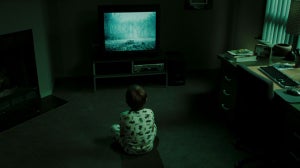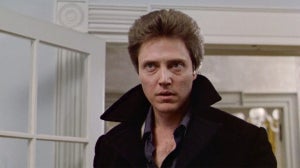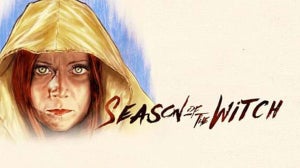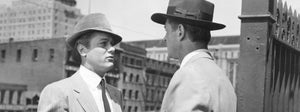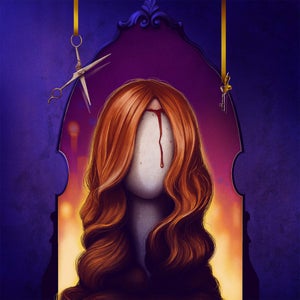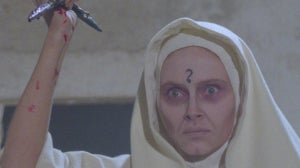
There are few icons of horror cinema so instantly recognisable as Frankenstein’s monster. The popularity of Mary Shelley’s 1818 novel and the later emergence of cinema meant the author’s hideous creature was destined to grace the silver screen. First adapted in 1910 with J. Searle Dawley’s short film Frankenstein, the tragic tale of science gone amuck has since inspired numerous features for over a century. Naturally, creative liberties have resulted in many different interpretations of Shelley’s story, some of which are wilder than others. With that in mind, here are five of the most unlikely Frankenstein adaptations.
Frankenstein (James Whale, 1931)
While Shelley’s novel had been put to film thrice before, it was with James Whale’s 1931 effort that Frankenstein made a real cinematic splash. Although now regarded as a timeless classic, Whale’s film is an unlikely adaption in that it deviates so heavily from the source material. In actual fact, the initial plot was inspired by British playwright Peggy Webling’s 1927 stage play. Interestingly, several of the film’s narrative differences have since become widely accepted as mainstays of the Frankenstein story.
The impact of the now-iconic imagery in this film cannot be overstated, as Boris Karloff’s lumbering beast has become the definitive embodiment of Frankenstein’s monster. The gothic tower in which Dr Henry Frankenstein carries out his ghastly experiments evokes the disorienting visuals of Robert Wiene’s The Cabinet of Dr Caligari (1920), while a dark and heavy atmosphere hangs over every frame.
Still shocking over 90 years later, the monster’s controversial encounter with an unfortunate young girl remains heart-breaking to watch. It may not have been the first, but the masterwork that is Whale’s Frankenstein set the blueprint for all future adaptations.
https://www.youtube.com/watch?v=BN8K-4osNb0
Frankenstein vs. Baragon (Ishirō Honda, 1965)
The image of Karloff’s ghastly monster spread far and wide, eventually landing on the radar of Japanese studio Toho during the height of the kaiju eiga craze. In an unlikely chain of events, and after a prolonged development, Frankenstein vs Baragon – or Frankenstein Conquers the World to Western audiences – debuted in glorious Tohoscope in 1965, directed by none other than the legendary Ishirō Honda.
Rather than being a man-made monster, the creature named Frankenstein is born from the surviving heart of Dr Frankenstein’s first creation, thought lost to the atomic destruction of Hiroshima. The giant Frankenstein is pursued by the authorities for causing chaos that is ultimately pinned on the pesky Baragon – another popular kaiju that is introduced here for the first time. The finale sees the two titans face off in an SFX-heavy showdown of epic proportions as the hapless humans watch on.
Despite his gargantuan size and caveman-like appearance, Honda’s monster shares many of the features associated with Karloff’s creature, what with its large, square head and deep brow. The recurring line of “Frankenstein will never die” is rather poetic, considering the staying power of Shelley’s tale.
https://www.youtube.com/watch?v=DOmEWQ5RjIE
Blackenstein (William A. Levey, 1973)
In 1972, director William Crain made the bold move of merging blaxploitation and horror with the outrageously entertaining Blacula. The success of Crain’s fang-toothed feature inspired criminal lawyer Frank R. Saletri to write and produce the aptly titled Blackenstein, which was released the following year. Rather than the creature being built from scratch, Joe De Sue’s Vietnam veteran Eddie Turner is warped into a mindless monster after reconstructive surgery from the kindly Dr Stein is tampered with. The resulting transformation causes Eddie to become the titular villain and start an indiscriminate killing spree.
While shades of the 1931 film find their way into Saletri’s production, there’s little to link Blackenstein to traditional Frankenstein cinema. However, the film is less concerned with adapting Shelley’s novel and more about drawing in an African-American audience. Familiar staples of blaxploitation, including an extended cutaway to a comedy club and the addition of an upbeat, funk soundtrack, are typical of similar films from the era. With this in mind, Blackenstein better showcases the versatility and cultural significance of both the Frankenstein story and the blaxploitation genre.
https://www.youtube.com/watch?v=6bxOc--RLtA
Frankenhooker (Frank Henenlotter, 1990)
As well as horror, Shelley’s tale has also been subject to many comedic adaptations, notably Charles Barton’s Abbott and Costello Meet Frankenstein (1948). However, the title of ‘Best Frankenstein Parody’ surely goes to Frank Henenlotter’s cult classic Frankenhooker. The film follows genius loner Jeffrey Franken who attempts to bring his beloved fiancé Elizabeth back to life after a tragic yet undeniably humorous accident. While her head remains perfectly preserved, Jeffrey is in desperate need of new body parts – enter the hookers of New York City.
Frankenhooker isn’t just a homage to the cinematic legacy of Frankenstein; it’s a love letter to the goofy and gory exploitation flicks of the 1960s and 70s. The purposely trashy special effects and ridiculous premise are a joy to behold. Patty Mullen’s memorable performance is integral to the film’s success, with everything from her parrot-like delivery of the line “wanna date?” to her elastic facial spasms being hysterical. Initially handed an unjust X-rating, the film was eventually released unrated and has since gained a strong cult following.
https://www.youtube.com/watch?v=8-LQ01M32LA
Mary Shelley’s Frankenstein (Kenneth Branagh, 1994)
Just as Frankenstein followed Dracula in 1931, Mary Shelley’s Frankenstein came shortly after Francis Ford Coppola’s similarly titled Bram Stoker’s Dracula (1992). Aside from one spoilerific narrative deviation, Kenneth Branagh’s film is easily the most faithful big-screen adaptation of Shelley’s novel. However, in being so, the movie rails against the well-established image of Frankenstein’s monster, as we’re instead presented with a more intelligent and empathetic creation.
More so than any other Frankenstein adaptation, there’s a palpable sense of tragedy in Branagh’s effort, something that evokes the spirit of the original text. The scenes where we sit with Robert De Niro’s monster as he takes refuge in a poor family’s stable are ripped straight from the pages of Shelley’s novel and are vital to establishing the creature as a sophisticated and sorrowful being.
Unjustly maligned, Branagh’s film is ripe for re-assessment. One might argue that if it were released today, it would be received as a stylistic breath of fresh air compared to the oft drab and dour contemporary adaptations of classic horror. Romanticised and operatic, Branagh’s film marks the legacy of Frankenstein coming full circle as we return to the masterful novel that kickstarted it all.
https://www.youtube.com/watch?v=ZkZAPkKDd9I
These are only a handful of the many Frankenstein film adaptations out there, with several more being produced in the 2010s alone. Mary Shelley’s tale has endured for over 200 years and shows no signs of wilting away any time soon. The author’s timeless story is very much alive, so as long as Frankenstein remains in the public consciousness, we can expect to see many more ambitious adaptations.

Related Articles
